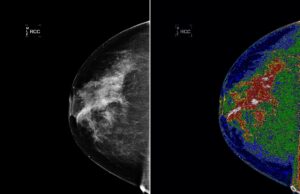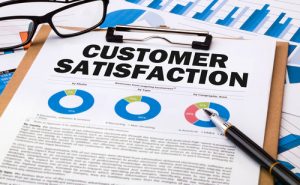Summary: “I must admit that I chose to be uninsured,” C. wrote to me. “My work does not provide health insurance and I looked into nystateofhealth.ny.gov during the fall of 2014, excited to have real health care options. I am 33 years old, and could comfortably afford an insurance that was $160 per month. I punched in my info and looked at my options. Nothing was lower than $240. And I knew from my boyfriend that the quality of these low ball ‘bronze’ options was pretty pathetic — waiting lists for appointments, long waits once there, poor visit quality — and he paid $120 per month for his.”
(Editor’s note: I am posting this essay from a friend’s daughter using only her initial, C., to preserve her anonymity. I also removed the name of a radiology practice she used because there’s not a good way to reconstruct her experience and validate it for my readers. At the bottom is a list of resources with explanation that I sent to C., which had been sent to me by my friend Casey Quinlan, a communicator and patient advocate and the author of “Cancer for Christmas,” about her breast cancer experiences.)
Why would I pay twice as much for the same poor coverage? Being a relatively healthy person, I chose to forgo health care than paid more than I could for low quality insurance I knew I couldn’t trust.
During April of 2015, I found a small lump in my right breast. Throughout the years, doctors had found very small lumps in my breast. They explained it was probably due to my period, I would return the following month and the lumps would be gone. So this time I followed that same plan. I took note of the spot and checked a month later in May. It felt the same, perhaps a bit smaller. I thought very little of it and honestly forgot all about it.
Then one night in the beginning of June I was lying on my couch, and I brushed my hand over my chest to adjust my shirt, and I noticed the lump again. This time it was bigger! Much bigger than before!
Searching for insurance
I knew there were “qualifying events” that could allow me to sign up for a state health care plan despite the enrollment period being closed. In my research, it looked like a change in income was a viable event. I had a seasonal part time job on Sundays, which due to the demands of my full time job I’d have to quit. It all seemed to work out perfectly. The last day of the season was June 15th, so on June 16th I called the NY State health exchange and inquired about my options.
The woman on the phone pretty much told me I had none. Quitting a part time job wasn’t an event. What about moving to Kings County? I remembered seeing that on a subway ad. She explained moving would only count if I had moved from out of state not intrastate. This was a dead end.
I called a private insurance company, thinking they’d be more than happy to take my money and start me on a plan, but they explained that now they, as most private insurances, follow the same enrollment as Obamacare. I was out of luck until November, with coverage not starting until January 2016.
Planned Parenthood appointment
Feeling entirely abandoned, I made an appointment for Planned Parenthood. I got an appointment for the same day, but they were seriously overbooked and woefully understaffed. I had been waiting for over 2 hours when a manager came out and explained that now appointments were running 3 hours behind schedule and anyone who wanted to reschedule could.
I sat in my chair excited as half the waiting room got on line to reschedule, but that soon disappeared as one by one they all opted to wait it out. I finally went up and asked to reschedule my appointment for early Saturday morning. I had basically waited 2 1/2 months — what was another 4 days?
The nurse practitioner agreed that there was a lump in my breast and recommended a mammogram and an ultrasound. I went to [xxxx] Imaging Services and paid for both out of pocket.
It was a disheartening experience. I have never seen patients treated with such a lack of dignity and compassion. I sat there for over 2 hours and watched as the desk clerk who was responsible for importing new patient information fell asleep at his desk. You were forced to get changed in a stall and then exit in a hospital gown as a group of coed employees loudly complained about their jobs in front of you as you sat in a danker and tinier waiting room. But I’ll stop this story there…
A few days later the NP from Planned Parenthood called and gave me the results: they weren’t sure what the lump was and recommended a biopsy. It happened to be the week of my little brother’s wedding.
Seeking resources
I had told a few close friends about the lump, but not my family and a few days before a wedding didn’t seem like the best time. Two days after the wedding, I told my parents what was happening. Both my mother and my father had benign breast lumps successfully removed so they knew firsthand the emotional roller coaster I was going through.
My father sprung into super-Dad mode and contacted Jeanne Pinder. Jeanne very quickly sent an email wishing me the best and providing me with a great list of organizations to contact.
The very first one listed was Susan G. Komen of Greater New York. Their website provided an amazing list of community partners. I was overwhelmed and felt that I probably didn’t qualify for any of these programs, but I decided to give Komen a call anyway and plead my case.
I am so thankful I did!!! The woman asked me a few questions and then gave me the contact info for the Cancer Services Program at The Brooklyn Hospital Center. I called and had an appointment scheduled for the next week.
Dori Ten, who is in charge of the program, and Dr. Go, the program’s surgeon, have been amazing. Ms. Ten said that though the program is typically for women 40 and over, I was a high risk case and would qualify. She explained the program could only cover one procedure, either a needle biopsy or excision biopsy.
After much discussion, I decided to go for the excision biopsy. If I chose the needle biopsy I’d have to get additional follow up biopsies every 3-6 months for the next 2 years and pay for them out of pocket. The lump didn’t belong in my body and since the full removal of it and follow up would be covered, I decided I might as well have it all taken out…
Komen Website: http://www.komennyc.org/site/PageServer?pagename=community_partners
Cancer Services Program: http://www.tbh.org/cancer-care/cancer-screening-program
The excision biopsy and the results
On July 31st, I went in for the excision biopsy, which is a surgery where they remove the whole growth. Before the surgery, the doctors were sure I had fibroadenoma – the most common and typically benign breast lump there is. The surgery went well, I felt much better than expected, and a week later went to get the results of the biopsy, which, honestly, were mixed.
Thankfully the lump was benign, but it was not fibroadenoma but a phyllodes tumor— an incredibly rare and very quick-spreading tumor that very easily takes root in healthy tissue. To insure the growth would not return, they would need to perform a second surgery to remove the margins around the lump. Thankfully, CSP would cover the second surgery.
Two weeks to the day of my first surgery, I was back in for my second. They removed a substantial portion of healthy breast tissue. Though nearly identical to the first, the second surgery was much harder to recover from. There was a significant amount of pain, far more than what I experienced the first time.
Though I am still recovering, I am happy to report that the results from the second surgery were clear. No new growth was found, but I will need to have a mammogram every year for the next 3-5 years and any growths found should be looked at immediately.
Because of the invasive nature of phyllodes tumors, I was given a mammogram on my left breast. The results from that weren’t as sure as I would have liked. It said I have dense breast tissue on the left and no growths were detected, but because of the density they recommend an ultrasound. CSP will not be able to pay for the ultrasound, so now I am deciding whether or not to pay for it out of pocket. I am leaning towards yes because I want peace of mind and hopefully undergoing the ultrasound on my left side will give that.
What the future holds
I am cautiously optimistic about the future. My health is not something I can continue to take advantage of, but it is disheartening to realize how murky and complicated our health care system remains.
Had I chosen to go with the low quality insurance policy I probably would be paying for a substantial portion of this out of pocket, so in a strange way my gamble paid off. But how many other people are as lucky as I am?
When I really needed guidance my family had an extended network of knowledgeable friends like Jeanne Pinder who could point us in a sure direction. How many people have that? Now as I look towards enrollment for 2016, I can’t help but continue to question if “Obamacare” has really delivered on it promises and if signing up for it this year is more of the real gamble.
What I sent to her father, lightly edited
My friend, Casey Quinlan, is a consultant in health care, author of “Cancer for Christmas” and an advocate of peer-to-peer health care, meaning patients helping other patients navigate through the mess that is our health care system.
******
Casey wrote:
Mastectomy has a more lengthy recovery period than my lumpectomy did, and then there’s the whole “reconstruction or not?” decision tree to navigate, with additional surgical-recovery time should you go the recon route. I know women who have made both yes and no choices.
I recommend SmartPatients.com to anyone newly diagnosed with any type of cancer who asks, so that’s a great place to start. You can ask questions in the breast cancer community, and get some answers from folks who’ve been there/done that on all branches of the decision tree. It’s a moderated community, too,.
The Breast Cancer Social Media (#bcsm) community is also a wealth of info and support for both the newly-diagnosed and us old-grrlz.
Site: http://bcsmcommunity.org/
FB: https://www.facebook.com/BCSMCommunity
YT: https://www.youtube.com/user/bcsmcommunity
Twitter: https://twitter.com/bcsmchat (there’s a tweetchat every Monday night at 9pm ET)
I’d also recommend getting a copy of Dr. Susan Love’s Breast Book:
http://www.amazon.com/Susan-Breast-Edition-Merloyd-Lawrence/dp/0738213594
The day I got my diagnosis, someone handed me a copy of the book at a dinner party (don’t ask, long story, but it’s all in *my* book ;>), and it saved my sanity every time I opened it. It’s totally the owner’s manual for the human breast, walking the reader through function, illnesses (including cancer), how to read a pathology report, treatment options, the whole nine.
AFA the resources piece goes, there are national programs as well as a host of state/local ones. I know this because I had to figure out how to keep a roof over my head during treatment, too.
Some national assistance program resource links:
From Susan G. Komen for the Cure (great resources page):
http://ww5.komen.org/BreastCancer/FinancialResources.html
Living Beyond Breast Cancer:
http://www.lbbc.org/Recommended-Resources/Recommended-Links/Financial-Concerns
Patient Advocate Foundation (can help with all phases of care navigation):
http://www.patientadvocate.org/
Not sure where you are geographically, but there are undoubtedly resources in your state, county, and/or city, and asking your care team for some advice would be a very good idea. My breast surgeon handed me a folder at my first appointment that had information about local and national assistance programs, and I tapped several of them during Cancer Year.
Another tack I’ve seen several patients take is doing a GoFundMe or Kickstarter – that’s work, though, and I’d hate to recommend it to someone who’s actually being treated. If you’ve got a social network who might take point on that, that’s the approach I’d recommend.
Casey Quinlan, the “Mighty Mouth”
Patients for Clinical Research









